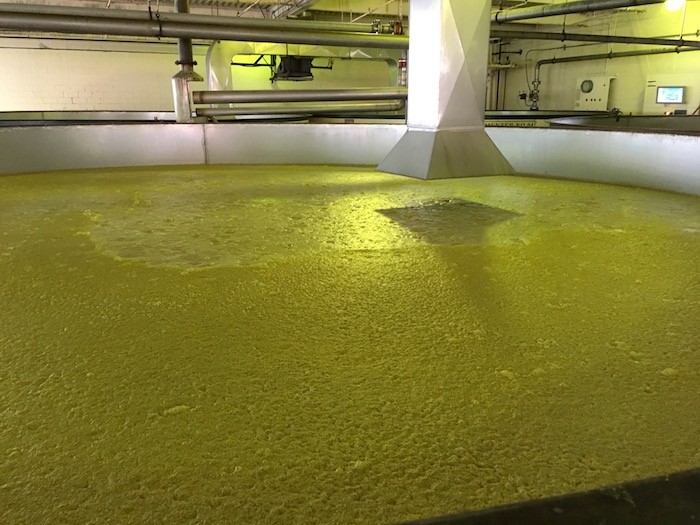In past articles in this series, we’ve looked at various organic compounds and their potential influence on the overall flavor profile of a given whisky. This time, we’re going to look at the fermentation phase of whisky production from a slightly different angle by asking the following question: If yeast metabolizes malt sugars, produces alcohol, and dies within the first 48 hours or so of the fermentation phase, what happens next and why is it important? To find the answers, we’ll look at the role of lactic acid bacteria in fermentation.
Several studies conducted in the early 2000’s produced some very useful results in terms of understanding the role of lactic acid bacteria in Scotch malt whisky production. One study looked at the makeup of the lactic acid bacterial flora at 23 different Scottish malt distilleries, another analyzed the resident bacterial flora at a single distillery over a 12-month period, and a third explored the organoleptic effects on the resulting new-make spirit of various Lactobacillus strains in the late fermentation phase.

So how does all this work? Malted barley carries microbes with it into the distillery, predominantly lactic acid bacteria. Unlike beer, worts are not boiled in the production of scotch malt whisky in order to allow the enzymes formed during malting to continue their work converting barley starches into fermentable sugars during fermentation. Although most of the barley-borne lactic acid bacteria are killed during the mashing process, some survive and are present in the fermentation phase, colonizing pipes and heat exchangers on their way to the washbacks.
As the fermentation gets underway, yeast dominates the process, metabolizing the glucose, maltose, and other fermentable sugars into alcohol. Hydrogen ions excreted by the yeast during this period lower the pH of the wash from its starting point of around 5.5. As the yeast cells begin to die out (around 40 hours into the fermentation cycle), Lactobacillus strains (particularly L. fermentum and L. paracasei), which thrive in relatively low pH environments take advantage of the situation, increasing their numbers and metabolizing autolyzed yeast cells, along with residual dextrins and pentose sugars the yeast was unable to metabolize.
Lactobacillus acidophilus is also present in large numbers by around 48 hours into fermentation. The activity of these and other Lactobacillus strains produces acetic and lactic acid, which drops the wash pH even further to around 3.8. The presence of these acids leads to a general increase in esters in the new-make spirit.
One of the studies mentioned also demonstrated that the lactobacilli themselves “might also produce specific flavor compounds that contribute in a unique way to the flavor of the spirit” (Priest, F.G. 2004). Specifically, the study demonstrated that concentrations of the ketone Damascenone (herbal, rose, and tobacco-like aromas) in new-make spirit were as much as three times higher when late lactic fermentation had occurred vs the control sample, created without late lactic fermentation.
Further, it was demonstrated that the presence of specific strains of Lactobacillus had specific organoleptic effects on the resulting new make, some creating more leafy notes while others produced more fruity or fatty sensations on the palate.
Another study sought to provide a better understanding of the diversity of lactic acid flora at specific distilleries. This was accomplished first by analyzing late-fermentation samples from 23 different malt distilleries from a number of the whisky producing regions of Scotland.
The results showed the presence of 64 strains of Lactobacillus grouped into 26 distinct ‘ribotype’ (DNA sequence differentiation analysis) patterns. Some of these patterns were found in distilleries throughout the country while others were specific to region and, in some cases, to an individual distillery.
Secondarily, late-fermentation samples from a single distillery (Glenkinchie) were analyzed repeatedly over a 12-month period. The lactobacillus flora there was found to be stable for months at a time, interrupted only by the distillery’s silent season and by a temporary switch in production from one barley strain to another.
In the first case, the two Lactobacillus strains from the overall flora lost during silent season reappeared within a few months of return to production. In the second case, a new Lactobacillus strain appeared when the new barley strain (Maud) was introduced but disappeared again once the distillery reverted back to the strain previously in use (Dercado), indicating that changes in the raw materials utilized in the whisky making process can have an effect on the makeup of a distillery’s lactic acid bacteria flora.
All this seems to indicate that the easily overlooked element of a distillery’s specific Lactobacillus flora can be an important contributor to the ‘sense of place’ communicated through the enjoyment of its whiskies.








